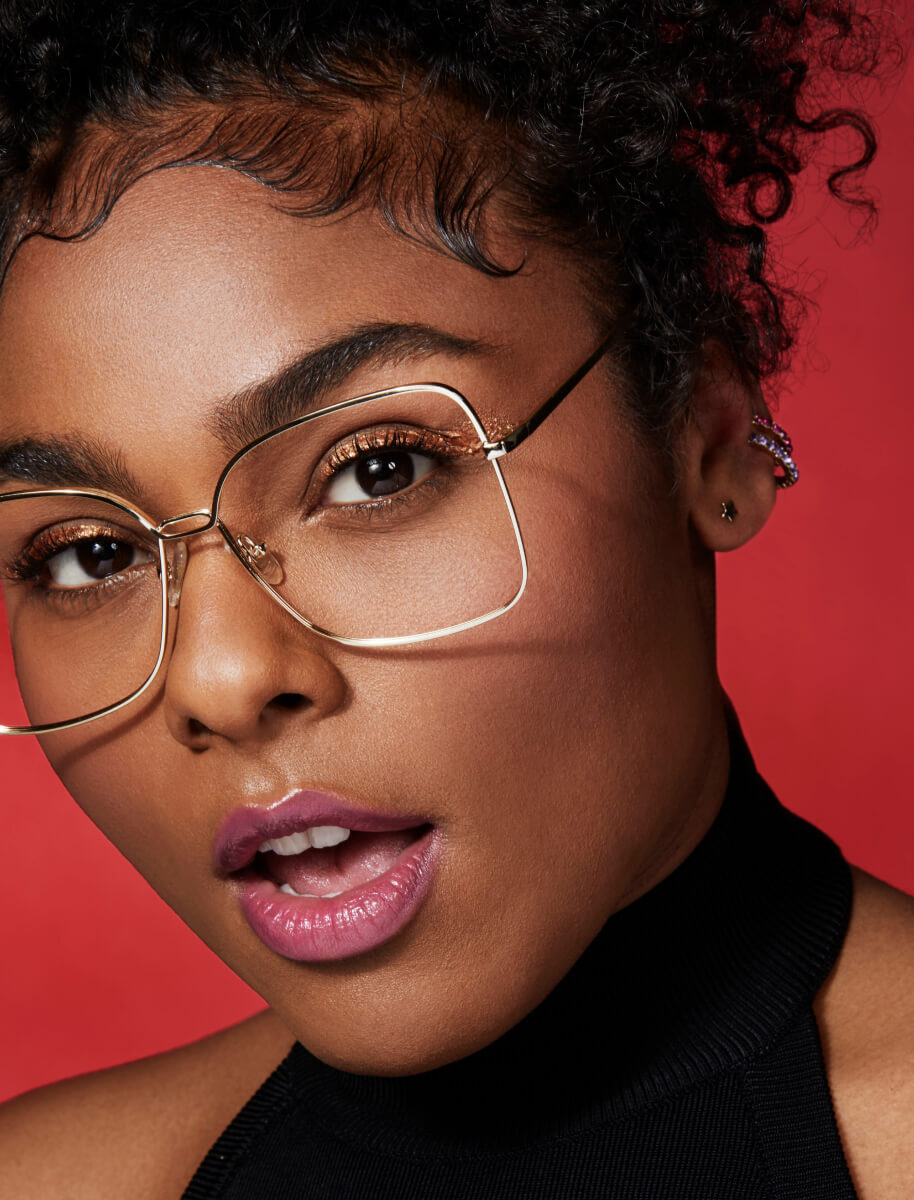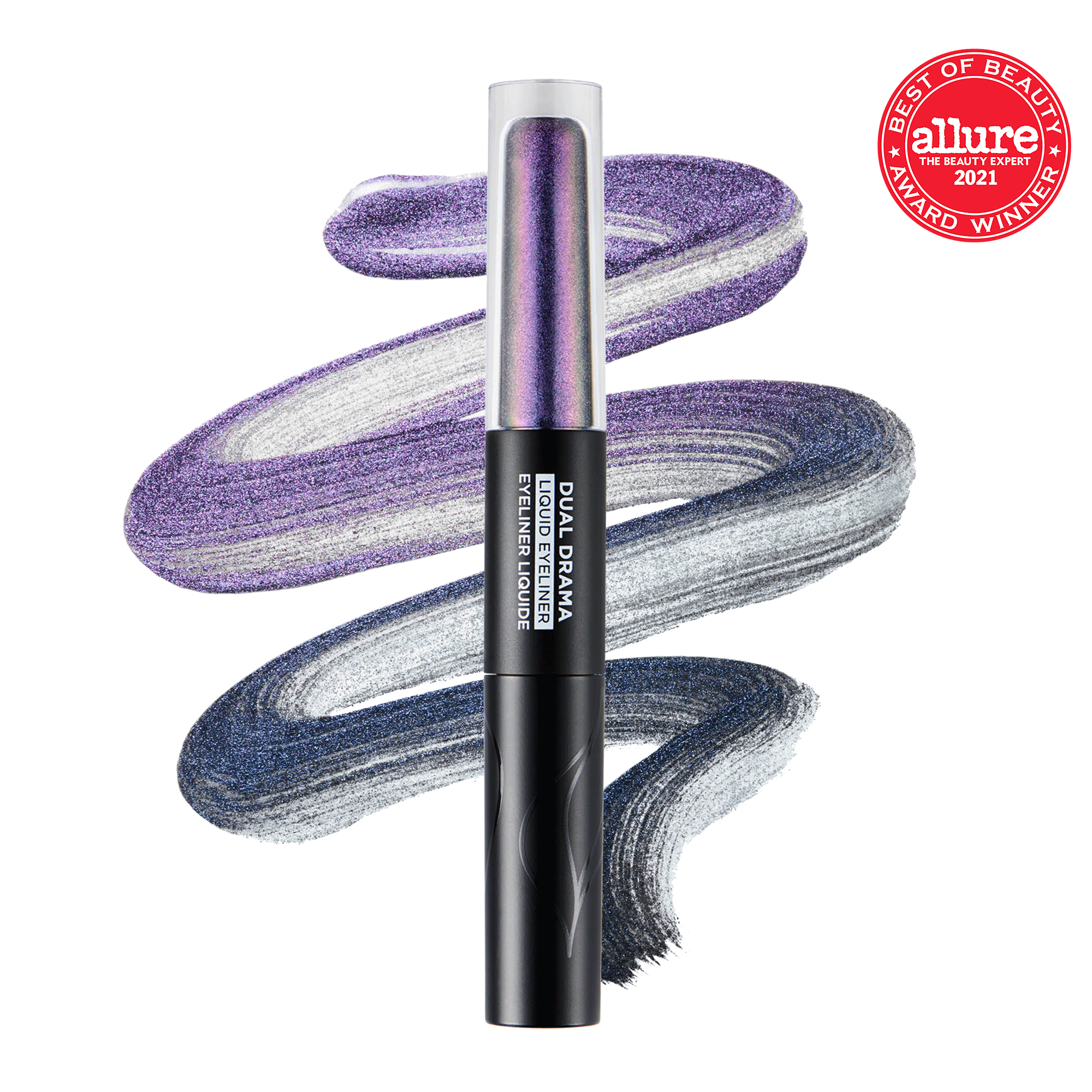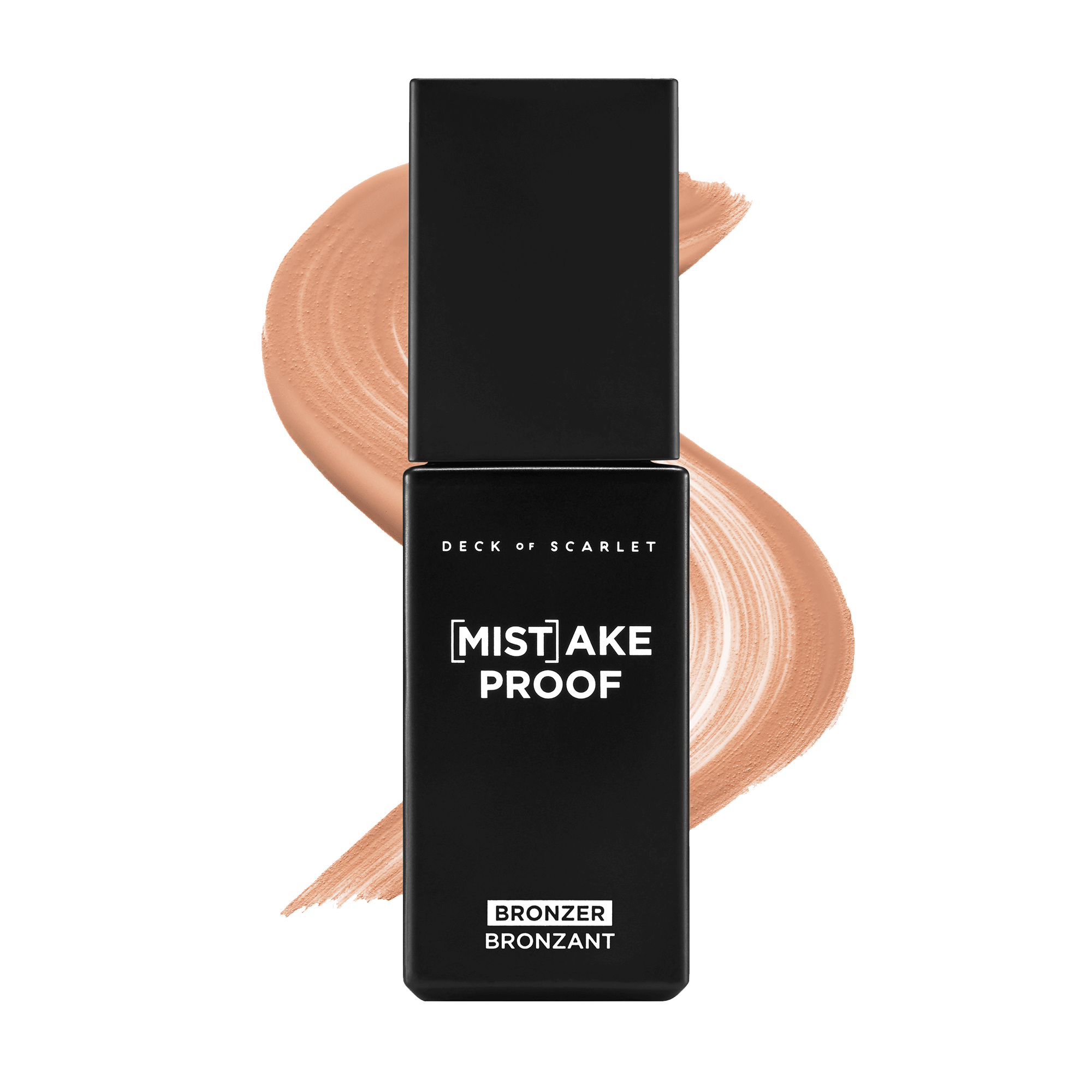Scarlet’s Hard Pass List
We’re all about bold finishes, unconventional textures, and brighter-than-bright colors, but as for problematic ingredients? Hard pass. Our formulas are one area where we refuse to play dirty, and we’ll never use ingredients that compromise the health and safety of your skin. The EU currently has over 1,400 ingredients banned from use in cosmetics, while the US has only banned 11 ingredients (which like, please do better). The industry-wide definition of what clean means is still being established, which is why we’re extra vigilant about vetting every single item we put into our products to ensure it meets our clean, vegan, and cruelty-free standards. Here, we’ve outlined all of the potentially harmful ingredients we vow to never use in our formulas.
What it is: A fragrance and flavor ingredient
What it does: Contributes to the composition of fragrances
Potential concern:
Skin irritant
Respiratory irritant
Eye irritant
What it is: A solvent
What it does: Breaks down and dissolves ingredients - most commonly used in nail polish and fragrances
Potential concern:
Organ toxicity
Skin irritant
Skin sensitizer
What it is: A fragrance and flavor ingredient
What it does: Contributes to the composition of fragrances
Potential concern:
Skin irritant
Respiratory irritant
Eye irritant
What it is: Polyacrylamide
What it does: Acts as a film forming agent and binder in skincare formulas
Potential concern:
Carcinogen
Skin sensitizer
What it is: Ethyl acrylate, Ethyl methacrylate, Methyl methacrylate, Butyl methacrylate, Hydroxypropyl methacrylate, Tetrahydrofurfuryl methacrylate, Trimethylolpropane trimethacrylate
What it does: Adhesive to apply artificial nails and eyelashes
Potential concern:
Potential carcinogen
Skin/eye irritation
What it is: SD alcohol, denatured alcohol, isopropyl alcohol, cetearyl alcohol
What it does: Acts as a solvent
Potential concern:
Skin irritant
Skin sensitizer
What it is: Any animal derived ingredient, i.e., beeswax, carmine, lanolin
What it does: Acts as an emulsifier or coloring agent
Potential concern:
Organ toxicity
Skin irritant
Sustainability
Animal welfare
What it is: Meat, fat bone, or genital glands of animals
What it does: A perfuming agent and/or skin conditioning agent
Potential concern:
Organ toxicity
Skin irritant
Sustainability
Animal welfare
What it is: Aluminum chloride, aluminum chlorohydrate, aluminum dichlorohydrate, aluminum salts
What it does: Blocks sweat ducts preventing sweat from reaching the skin’s surface
Potential concern:
Carcinogen
Neurotoxicity
Endocrine disruptor
Organ toxicity
What it is: Synthetic form of aluminum, sometimes listed as alumina
What it does: Acts as an opacifying agent, skin protectant, and pH adjuster
Potential concern:
Organ toxicity
Neurotoxicity
What it is: Elemental aluminum
What it does: A natural coloring agent that imparts a white color to skincare products and color cosmetics
Potential concern:
Organ toxicity
What it is: Butylated hydroxyanisole & Butylated hydroxytoluene
What it does: Synthetic antioxidants used to extend shelf life
Potential concern:
Carcinogen
Endocrine disruptor
Organ toxicity
Skin irritant
What it is: An industrial chemical used to make certain plastics and resins to prevent corrosion
What it does: Prior to being banned by the FDA in 2006, BPA was used in lipsticks, face, and eye products
Potential concern:
Carcinogen
Endocrine disruptor
What it is: Glycol ether
What it does: A solvent used in perfume, cosmetics, and liquid soaps that also helps control a formula’s viscosity
Potential concern:
Carcinogen
Endocrine disruptor
Reproductive harm/ toxicity
Skin irritant
What it is: Oxybenzone, Benzophenone, Benzophenone-3, Octinoxate, Octyl Methoxycinnamate, Octocrylene, Octisalate, Homosalate
What it does: Protects skin from the harmful effects of the sun’s UV rays
Potential concern:
Hormone disruptor
Endocrine disruptor
DNA cell damage
What it is: Chlorhexidine and its salts (Chlorhexidine Dihydrochloride, Chlorhexidine Digluconate, Chlorhexidine Diacetate)
What it does: A preservative and antimicrobial agent that prevents the growth of harmful bacteria in any product that contains water
Potential concern:
Skin sensitizer
What it is: A by-product of coal processing (coal tar solution, P-phenylenediamine, Aminophenol, Diaminobenzene)
What it does: A colorant and anti-dandruff agent
Potential concern:
Carcinogen
What it is: D4, D5, D6, D7
What it does: used as a solvent & carrier fluid
Potential concern:
Reproductive & developmental toxicity
Endocrine disruption concerns
What it is: A skin softening agent
What it does: Used as a moisturizer in lotions, creams, and bath products
Potential concern:
Eye irritant
What it is: Diethanolamine (DEA), Cocamide DEA, Cocamide MEA, Triethanolamine (TEA), Monoethanlamine (MEA), Ethanolamine (ETA)
What it does: A surfactant and pH adjuster
Potential concern:
Carcinogen, may form carcinogenic nitrosamines
Skin toxicity
Endocrine disruptor
Inhibited fetal brain development
Reproductive harm
Organ toxicityAllergen
What it is: 1,4 dioxane, ceteareth-20, steareth-20, emulsifying wax, PEGs, SLES, Ammonium Laureth Sulfate (most ingredients ending in -eth)
What it does: Act as an emulsifying agent
Potential concern:
Carcinogen
What it is: Disodium EDTA, calcium disodium EDTA, tetrasodium EDTA, trisodium EDTA, HEDTA, Others with -EDTA
What it does: A binding agent that improves stability
Potential concern:
Organ toxicity
Aquatic environmental harm
What it is: DMDM Hydantoin, Diazolidinyl Urea, Imidazolidinyl Urea, Methylchloroisothiazolinone, Methylisothiazolinone, Quaternium-15, Sodium hydroxymethylglycinate, 2-bromo-2-nitropropane-1,3 diol (Bronopol),Tosylamide/ formaldehyde resin, Polyoxymethylene Urea, Glyoxal, Methenamine, Benzylhemiformal, 5-Bromo-5-Nitro-1,3 Dioxane, Sodium hydroxymethylglycinate, EDTA Salts
What is does: Preservative often used in cleansers
Potential concern:
Carcinogen
Neurotoxicity
Developmental toxicity
Reproductive harm
Allergy Trigger
Skin/ eye irritation
What it is: Glutaraldehyde
What it does: Acts as a preservative; prevents growth of harmful bacteria in any product that contains water
Potential concern:
Skin irritant
What it is: A skin bleaching agent
What it does: Reduces hyperpigmentation & uneven skin tone
Potential concern:
Carcinogen
Organ toxicity
What it is: Lead acetate
What it does: An impurity typically found in coloring agents
Potential concern:
Carcinogen
Endocrine disruptor
Organ toxicity
Neurotoxicity
What it is: A heavy metal called thimerosal typically found in eye makeup
What it does: Used as a preservative and antimicrobial agent
Potential concern:
Organ toxicity
Neurotoxicity
Reproductive harm
Developmental toxicity
What it is: Methoxyethanol
What it does: A solvent used in perfumes as an additive. It also helps to control a formula’s viscosity
Potential concern:
Organ toxicity
Neurotoxicity
Endocrine disruptor
Developmental toxicity
Reproductive harm
DNA/ Cell damage
Skin irritant
What it is: Prior to being banned by the FDA in 1988, methylene chloride was used as a fragrance and flavor ingredient
What it does: Contributes to the composition of fragrance
Potential concern:
Carcinogen
What it is: A non-biodegradable, solid synthetic plastic particle less than or equal to 5mm in size
What it does: Acts as an exfoliant
Potential concern:
Aquatic environmental harm
What it is: A by-product of petroleum distillation
What it does: An occlusive emollient, meaning it helps keep skin hydrated by locking in moisture by forming a barrier on your skin’s surface
Potential Concern:
Skin irritation
Clogged pores
Allergen
Contact dermatitis
Can be contaminated with PAHs which are linked to cancer
What it is: Extremely small particles (ranging from 1 to 100 nanometers) that have been synthetically engineered to be tiny, i.e., buckyballs, fullerenes, nanotubes, liposomes, or quantum dots
What it does: Provides UV protection, enhances a formula’s texture and penetration into the skin, an ingredient stabilizer, and/or acts as a preservative
Potential concern:
Organ toxicity
Endocrine disruptor
Reproductive harm
DNA/ Cell damage
Skin irritant
Not typically included on an ingredient listing
What it is: Musk ketone, musk xylene, musk ambrette, musk moskene, musk tibetene
What it does: Acts as an additive in fragrance to give a musk like scent
Potential concern:
Carcinogen
Endocrine disruptor
Neurotoxicity
Organ toxicity
Bioaccumulation
What it is: Esters of para hydroxybenzoic acid (We prohibit all parabens, including Ethylparaben, Butylparaben, Isobutylparaben, Isopropylparaben, Methylparaben, and Propylparaben)
What is does: Acts as preservatives and anti-microbial agent in skincare and cosmetic formulas
Potential Concern:
Endocrine disruption
Potential carcinogen
Developmental, reproductive & immune toxicity
Allergen
What it is: Polytetrafluoroethylene (PTFE), Perfluorooctanoic acid (PFOA), Perfluorooctanesulfonic acid (PFOS), Polyperfluoromethylisopropyl Ether, DEA-C8-18 Perfluoroalkylethyl Phosphate, Teflon
What it does: Acts as a surfactant and adds a smooth, sleek finish to cosmetic products
Potential concern:
Carcinogen
Endocrine disruptor
What it is: Petroleum derived ingredients such as paraffin wax, mineral oil, toluene, benzene, PEGs, DEA, MEA, butylparaben, EDTA, propylene glycol, and isopropyl alcohol that can be contaminated with polycyclic aromatic hydrocarbons (PAHs) and typically generate 1,4-dioxane
What it does: They are typically used as moisturizers, occlusive agents, emulsifiers, solvents, and preservatives
Potential concern:
Carcinogen
Organ toxicity
Neurotoxicity
Endocrine disruptor
What it is: A semisolid mixture derived from processed petroleum. Mineral Oil, Paraffin Wax, Liquid Paraffin, Liquid Petrolatum are also derived from petroleum distillation by-products
What it does: Used as a solvent & carrier fluid
Potential concern:
Unsustainable sourcing
Possible PAHs contamination, which are linked to cancer
What it is: DBP, DEHP, DEP, DMP & Others
What it does: Solubilizer most commonly found in synthetic fragrances
Potential Concern:
Hormone disruptor
Endocrine disruptor
Reproductive harm
May not be labeled on ingredient lists
What it is: An extract derived from human or animal placentas
What it does: Increases hair thickness and collagen production
Potential concern:
Carcinogen
Endocrine disruption
What it is: A preservative and antimicrobial agent
What it does: Prevents growth of harmful bacteria in any product that contains water
Potential concern:
Carcinogen
Organ toxicity
Skin irritant
Allergen
What it is: Galaxolide, tonalide
What it does: Acts as a fragrance additive
Potential concern:
Carcinogen
Endocrine disruptor
Neurotoxicity
Bioaccumulation
What it is: PEG compounds
What it does: Used as thickeners, softeners and solvents
Potential concern:
Possible contamination with 1,4-dioxane and ethylene oxide, both known carcinogens
Endocrine disruptor
Reproductive harm
What it is: Aminomethyl propanol
What it does: Adjusts a formula’s pH and acts as an ingredient stabilizer
Potential concern:
Carcinogen
Reproductive harm
Organ toxicity
Skin irritant
What it is: Benzalkonium chloride, cetrimonium chloride
What it does: Acts as a preservative, anti-microbial agent, and surfactant
Potential concern:
Skin, eye, and respiratory irritant
Allergen
What it is: 2-methylresorcinol (derivative of resorcinol)
What it does: Colorant for hair dye, fragrance ingredient, and an anti-acne active
Potential concern:
Endocrine disruptor
Organ toxicity
Skin irritant
Allergen
What it is: A combination of retinol (pure vitamin A) and the fatty acid palmitic acid
What it does: Antioxidant
Potential concern:
May speed the development of skin tumors and lesions when applied to the skin in the presence of sunlight
What it is: Bromostyrene, Deastyrene/ acrylates/ dvbcopolymer, Sodium styrene/ divinylbenzene copolymer, Styrene oxide, Styrene
What it does: Synthetic polymer used as a film former in sunscreens and lotions
Potential concern:
Non-reproductive organ system toxicity
Potential Carcinogen
What it is: ALS/ ALES, Sodium Lauryl Sulfate (SLS), Sodium Laureth Sulfate (SLES), Sodium Lauroyl Sarcosinate, and all other sulfates
What it does: Foaming agents commonly found in shampoos, face washes and shave creams
Potential Concern:
Contamination with 1,4 - dioxane
Organ toxicity
Skin/ eye irritation
Allergen
What it is: Fragrance/ parfum that may contain any combination of 3,000 plus stock chemical ingredients
What it does: Adds fragrance to a formula to produce a scent or mask an odor
Potential concern:
Carcinogen
Endocrine disruptor
Organ toxicity
Respiratory toxicity
Reproductive harm
Neurotoxicity
Skin irritant
Allergen
What it is: Talcum, talcum powder, cosmetic talc, magnesium silicate
What it does: Dilutes color and acts as an absorbent
Potential concern:
Asbestos contamination
What it is: Toluol, Benzene, Methylbenzene, Phenylmethane
What it does: A solvent usually found in nail polishes
Potential concern:
Neurotoxicity
Links to blood, brain and reproductive cancer
Birth defects
Reproductive, developmental and immune toxicity
Skin & organ irritation
What it is: Microban
What it does: An antimicrobial agent
Potential concern:
Endocrine disruptor
Organ toxicity
Skin irritant
Aquatic environmental harm


![MAUVE MINX [color]#A44E5C[/color]](http://www.deckofscarlet.com/cdn/shop/files/Mauve_Minx_swatch.png?v=1725032298)
